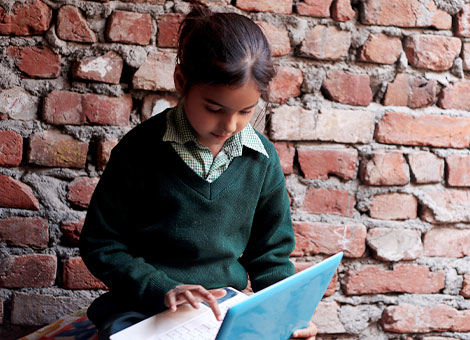Like in many parts of the world, education in India is driving the economy and has the potential to reshape society. Over the last few years, STEM (Science, Technology, Engineering and Maths) learning methodology is playing a huge role in completely transforming the education landscape in India.
According to the World Economic Forum, India is expected to have 10-12 million new graduates across the country every year, making it the biggest emerging workforce on the planet.
But it’s not all good news: while girls often outperform men at the high school level, only about 25% of them currently go on to become part of the workforce.
Part of this is due to society’s “double burden thinking”, where both men and women feel that domestic chores are often the duties of a female. The residual effect of this is that women only contribute 18% to India’s GDP, one of the lowest of such rates in the world.

A recent McKinsey report has shown that India could add close to a trillion US dollars to its annual GDP if more women were to enter the workforce over the next five years. When you juxtapose this with the demand for a highly qualified industry-ready workforce possessing Science, Technology, Engineering, and Math (STEM) skills, who can work on emerging technologies like Cloud and Artificial Intelligence (AI), it’s hard not to see an obvious solution.
Identifying the unaddressed need to cater to this often neglected area of the education sector, IBM has designed a new in-school-curriculum STEM program. The “IBM STEM for Girls” program is a comprehensive approach that builds technical capabilities, as well as life and self-actualization skills, to meet 21st-century challenges. More than 78,000 girls in Karnataka, Telangana, Andhra Pradesh, Odisha, Punjab, Haryana, Assam, Bihar, Rajasthan and Gujarat are currently part of this program, which includes teacher training as well as a three-year STEM curriculum for students in grades 8-10.
The ever-evolving skills this curriculum provides will enable students to be innovative, create solutions, and drive growth in all areas. This will have a tremendous impact over the next several decades and the ripple effect will help build a knowledge-based society.
IBM has many partners driving this initiative on the ground across India. One of the main partners is the non-profit trust Quest Alliance, and the other is American India Foundation Trust. They joined forces to find ways for more girls to take ownership and code their own projects. To that end, both Quest Alliance and American India Foundation helped empower thousands of girls in cities and towns across the country. The intent is to enable young budding workers to use their creativity and technical skills to become creators of innovative solutions rather than mere technology consumers. To meet this objective, the STEM program involves imparting critical life skills via interactive and safe learning spaces inside the classroom.
IBM's STEM initiative fundamentally aims to empower girls to break barriers. And it doesn't stop there. This is about activating and transforming the ecosystem of changemakers - parents, teachers, communities, and organizations – who can help open up a world of opportunities.
Coming up with solutions for issues as varied as constructing greener homes and contending for social mobility has become the currency of a design-thinking education model.
To champion these new ways of thinking, IBM has partnered with NITI Aayog, who has set up several Atal Tinkering Labs (ATL) in schools since 2017. These labs enable school children to experiment and gain hands-on experience using a wide range of equipment, including electronics, robotics, sensors, 3D printers, and computers. In the process, the students increase their ability to innovate and come up with out-of-the-box ideas, instead of the traditional rote learning process.
Khushi Gupta from Bhilai, after a year of trial and error, emerged as one of the top 50 innovators at the 2018-2019 Tinkering Innovation Marathon. With the help of two teammates, she created an “Electrode Sprinkler”, which converts the kinetic energy of a rotating sprinkler into electric energy. The concept is designed to help farmers who frequently face energy shortages across the country.
I am a science student and have always had the desire to contribute to society.
Competitions like these are a great way to turn theoretical knowledge into practical implementation.
“India’s growth for the next few decades will depend on the innovations coming out of these tinkering labs. Tomorrow’s ideas come from students, who will disrupt industries and creative sectors with new technologies and processes which will thrust India into the leadership position for technological creativity and innovation,” shared Amitabh Kant, CEO of NITI Aayog, in a statement.
Despite the slowdown in admissions due to the 2020 pandemic, IBM’s STEM for Girls program is anticipating 200,000 students and many more teachers taking part. This is part of a masterplan that can change the lives of many students and ultimately transform a country.
The success of India's digital roadmap will be defined by its ability to stay inclusive and diverse. With STEM for Girls program, IBM aims to nurture a holistic skilled talent pool, while contributing positively towards the country's Skill India and Digital India mission.